Daniel Angles-Alcazar
Robust field-level inference with dark matter halos
Sep 14, 2022
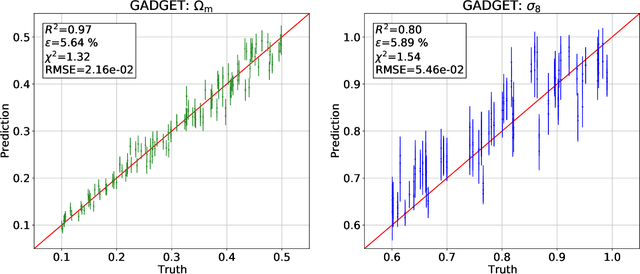
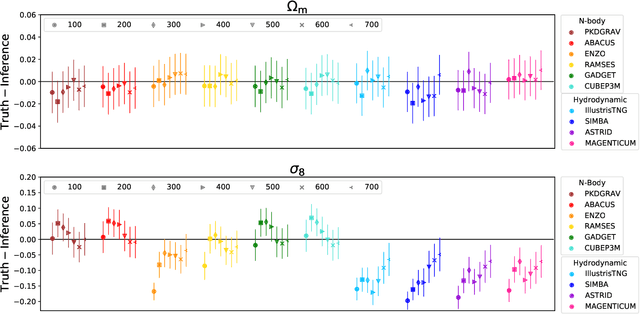

Abstract:We train graph neural networks on halo catalogues from Gadget N-body simulations to perform field-level likelihood-free inference of cosmological parameters. The catalogues contain $\lesssim$5,000 halos with masses $\gtrsim 10^{10}~h^{-1}M_\odot$ in a periodic volume of $(25~h^{-1}{\rm Mpc})^3$; every halo in the catalogue is characterized by several properties such as position, mass, velocity, concentration, and maximum circular velocity. Our models, built to be permutationally, translationally, and rotationally invariant, do not impose a minimum scale on which to extract information and are able to infer the values of $\Omega_{\rm m}$ and $\sigma_8$ with a mean relative error of $\sim6\%$, when using positions plus velocities and positions plus masses, respectively. More importantly, we find that our models are very robust: they can infer the value of $\Omega_{\rm m}$ and $\sigma_8$ when tested using halo catalogues from thousands of N-body simulations run with five different N-body codes: Abacus, CUBEP$^3$M, Enzo, PKDGrav3, and Ramses. Surprisingly, the model trained to infer $\Omega_{\rm m}$ also works when tested on thousands of state-of-the-art CAMELS hydrodynamic simulations run with four different codes and subgrid physics implementations. Using halo properties such as concentration and maximum circular velocity allow our models to extract more information, at the expense of breaking the robustness of the models. This may happen because the different N-body codes are not converged on the relevant scales corresponding to these parameters.
The CAMELS Multifield Dataset: Learning the Universe's Fundamental Parameters with Artificial Intelligence
Sep 22, 2021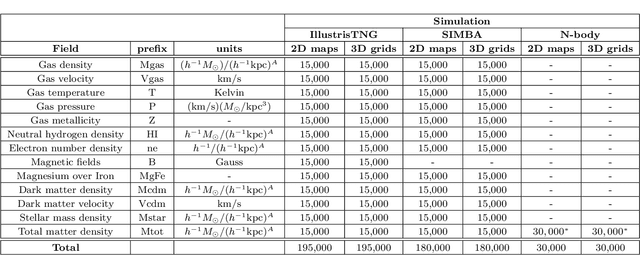
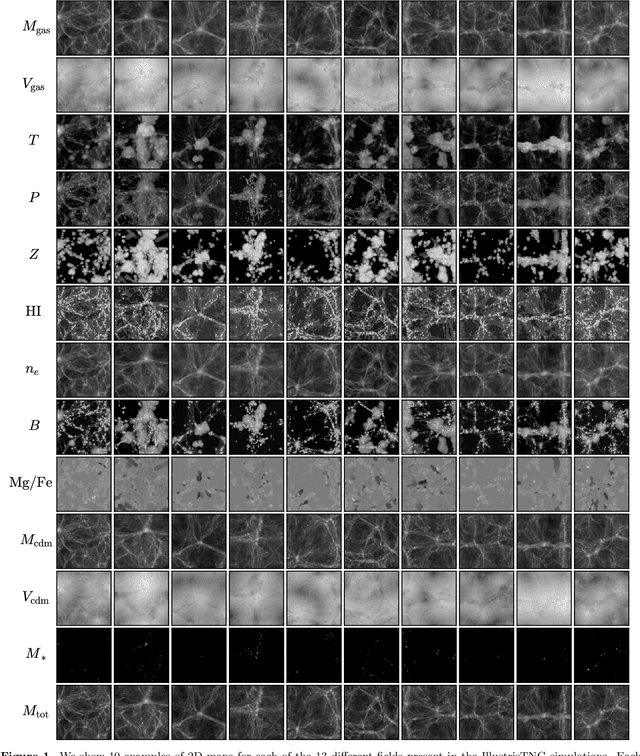
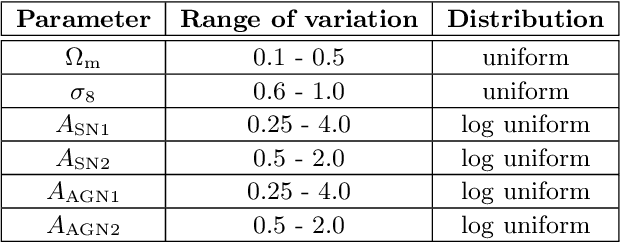
Abstract:We present the Cosmology and Astrophysics with MachinE Learning Simulations (CAMELS) Multifield Dataset, CMD, a collection of hundreds of thousands of 2D maps and 3D grids containing many different properties of cosmic gas, dark matter, and stars from 2,000 distinct simulated universes at several cosmic times. The 2D maps and 3D grids represent cosmic regions that span $\sim$100 million light years and have been generated from thousands of state-of-the-art hydrodynamic and gravity-only N-body simulations from the CAMELS project. Designed to train machine learning models, CMD is the largest dataset of its kind containing more than 70 Terabytes of data. In this paper we describe CMD in detail and outline a few of its applications. We focus our attention on one such task, parameter inference, formulating the problems we face as a challenge to the community. We release all data and provide further technical details at https://camels-multifield-dataset.readthedocs.io.
Robust marginalization of baryonic effects for cosmological inference at the field level
Sep 21, 2021
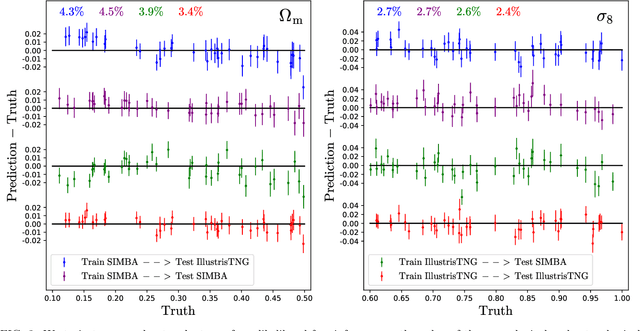
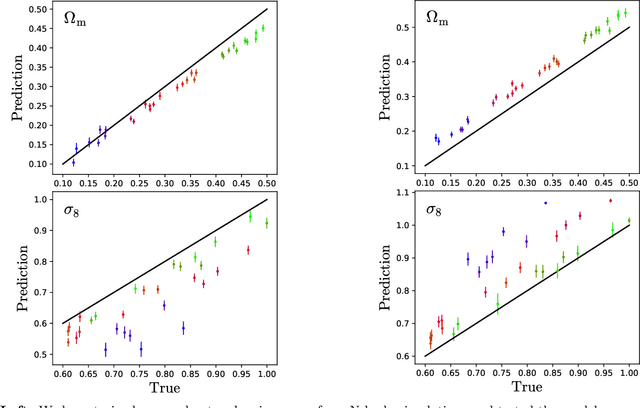
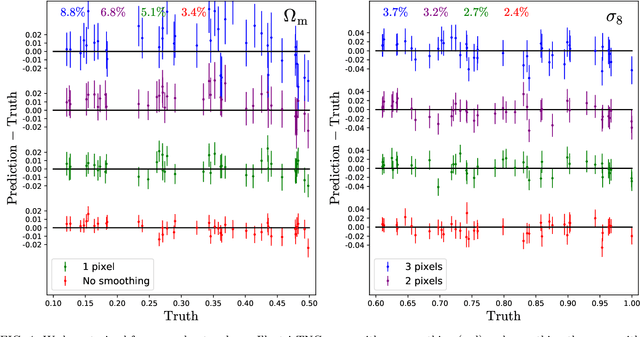
Abstract:We train neural networks to perform likelihood-free inference from $(25\,h^{-1}{\rm Mpc})^2$ 2D maps containing the total mass surface density from thousands of hydrodynamic simulations of the CAMELS project. We show that the networks can extract information beyond one-point functions and power spectra from all resolved scales ($\gtrsim 100\,h^{-1}{\rm kpc}$) while performing a robust marginalization over baryonic physics at the field level: the model can infer the value of $\Omega_{\rm m} (\pm 4\%)$ and $\sigma_8 (\pm 2.5\%)$ from simulations completely different to the ones used to train it.
 Add to Chrome
Add to Chrome Add to Firefox
Add to Firefox Add to Edge
Add to Edge